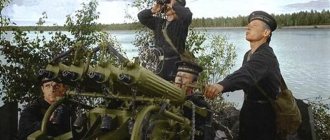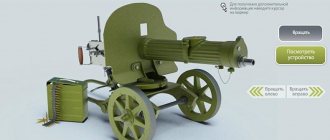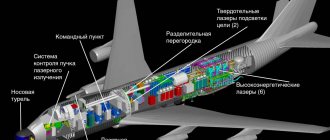VIP aviation
Abroad, this type has long taken a leading position and has a high level of service. In Russia it is defined as business and has only just begun to pick up speed in its development. Business aviation also falls into this category. Typically, this type refers to the private use of small aircraft.
The most popular aircraft at the moment remains the Gulfstream G500. Such aircraft are most often privately owned by one owner or rented from certain companies engaged in providing exclusively VIP service. The aircraft is ordered with personnel in the form of a pilot and a service conductor. All nuances are discussed directly with the customer (including the interior decor).
Unification of the use of field mines
At the end of 1943, the procedure for handling field mines changed dramatically. The order of the chief engineer and fortifier under the Chief of the General Staff of the Wehrmacht Army dated December 20, 1943 regulated the installation of mines by sapper platoons and especially training units of all branches of the military.
Subsequently, these “instructions for sappers,” which were distributed to all regiments and individual battalions of field and reserve units, became the “alpha and omega” of the use of mines at the front. They supplemented the relevant service instructions with new methods and proposals from the front.
A special combined release of the first ten “instructions for sappers” became the basis for handling mines, mine fuses and other explosive means. According to modern experts, the publication not only demonstrated a high technical understanding of the matter, but was also able to summarize the extensive front-line experience and personal knowledge of the authors.
Installation of anti-tank mines by Waffen-SS soldiers. Russia 1944
Since the number of models of anti-tank and anti-personnel mines, methods of their use and installation options was very large, during combat training it was recommended to concentrate on several of the most common types of engineering ammunition.
Since 1943, only about 15 German specialized instructions and memos (memos) - each document has survived to the present day - regulated the technical and organizational use of mines. Secret instructions were developed for minefields and guided mines.
Minefields had to be created according to certain patterns, which were described in detail in a specific manual (memo). If the situation required it, such schemes made it possible to quickly remove a minefield or make passages in it within a short time.
Army and fighter aviation
In order to lead the leading level in the airspace, it must first be occupied; this is done by fighter aircraft. It fights for superiority by destroying enemy aircraft, going into tactical depth. Air combat is not easy, so pilots perform such maneuvers in fighter jets, the most famous of which are the MiG-29 and Su-27.
Army or military aviation is a type of air force aviation directly subordinate to the ground forces of the Russian Federation. With its help, military personnel are landed, reconnaissance is carried out and ground forces are supported by combat fire. It is divided into assault, transport, special purpose and reconnaissance. The advantage is that in addition to airplanes, the army also has helicopters, for example Mi-24, Ka-52, Mi-28.
Types of aviation in the Russian Federation
Within the state there is a clear distinction regarding the purpose of aircraft. All types of aviation in the Russian Federation are described in the main aviation document - the Air Code. What types of aviation are there?
- Civil.
- State.
- Experimental.
Each of the listed species is divided into subspecies. So, for example, the types of civil aviation are understood as: directly civil (created for passenger transportation), civil commercial (used for commercial purposes, transportation of goods, transport, and so on), general aviation (aimed at performing useful work for society in agriculture, for medical and police assistance, as well as for private flights and training).
Experimental usually refers to technical testing of aircraft and various experimental work. State aviation is divided into military and state special purpose (detachments of the Ministry of Emergency Situations, Ministry of Internal Affairs, created to perform various kinds of special tasks). These two types of aircraft can also be used on commercial missions.
Mine awareness service
Since, in addition to stopping the enemy, the freedom of one’s own movement was also limited, documentation of established minefields became especially important. The task of providing the command with an overview of the use and defensive assessment of minefields was assigned to the mine awareness service (Minenmeldedienst)
The Wehrmacht ground forces specified exactly what mining reporting documents (“Minenschriften”) and with what detail each mine installer must prepare. A distinction was made between the plan and the mining scheme (mine-explosive barriers, cost centers). In addition, a report on mining and a map of minefields were processed.
The mining plan was understood as a scale drawing and description of the cost center with all the attached details and plans of the situation. They formed the basis of documentation on the use of mines. Plans were required to be executed every time a cost center was installed. With regard to mining schemes, on the contrary, it was a question of a preliminary mining plan carried out without taking into account the scale in a simple form.
Mining report
The document contains a description of the location, number, type and method of detonating mines in areas determined by the high army command on the map for combined mining. After accurately describing the boundaries of the areas, this report reports on mines:
A total of 67 "T-Mine 42" are installed in a non-retrievable position with the detonator down, with an additional charge and a ZZ.42 safety detonator.
According to modern German military history publications, for many years after the end of hostilities in 1945, mines caused a large number of casualties in Germany. In addition to many men on clearance teams and munitions personnel, mines also killed civilians and children.
For example, the municipality of Vossenack in Hürtgenwald reported 44 mine explosions between 1945 and 2008, of which more than 30 were fatal before 1952. According to military sources, in 1945, while clearing the Atlantic Wall on the Danish beaches of the North Sea, 2,500 German prisoners of war cleared about 1.4 million mines. In this case, about 1000 sappers died.
Based on materials from the military history magazine “Clausewitz”. Magazine illustrations.









